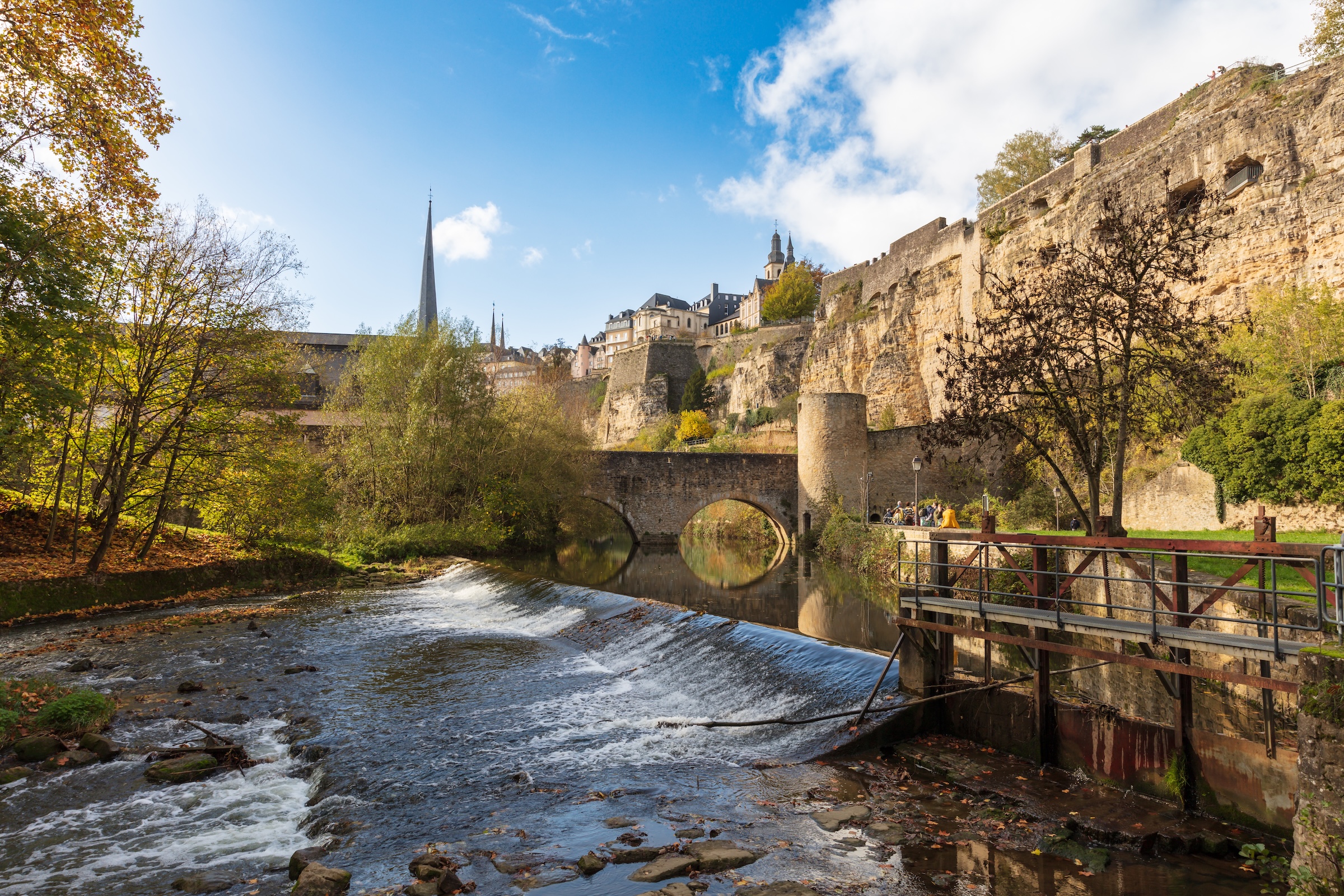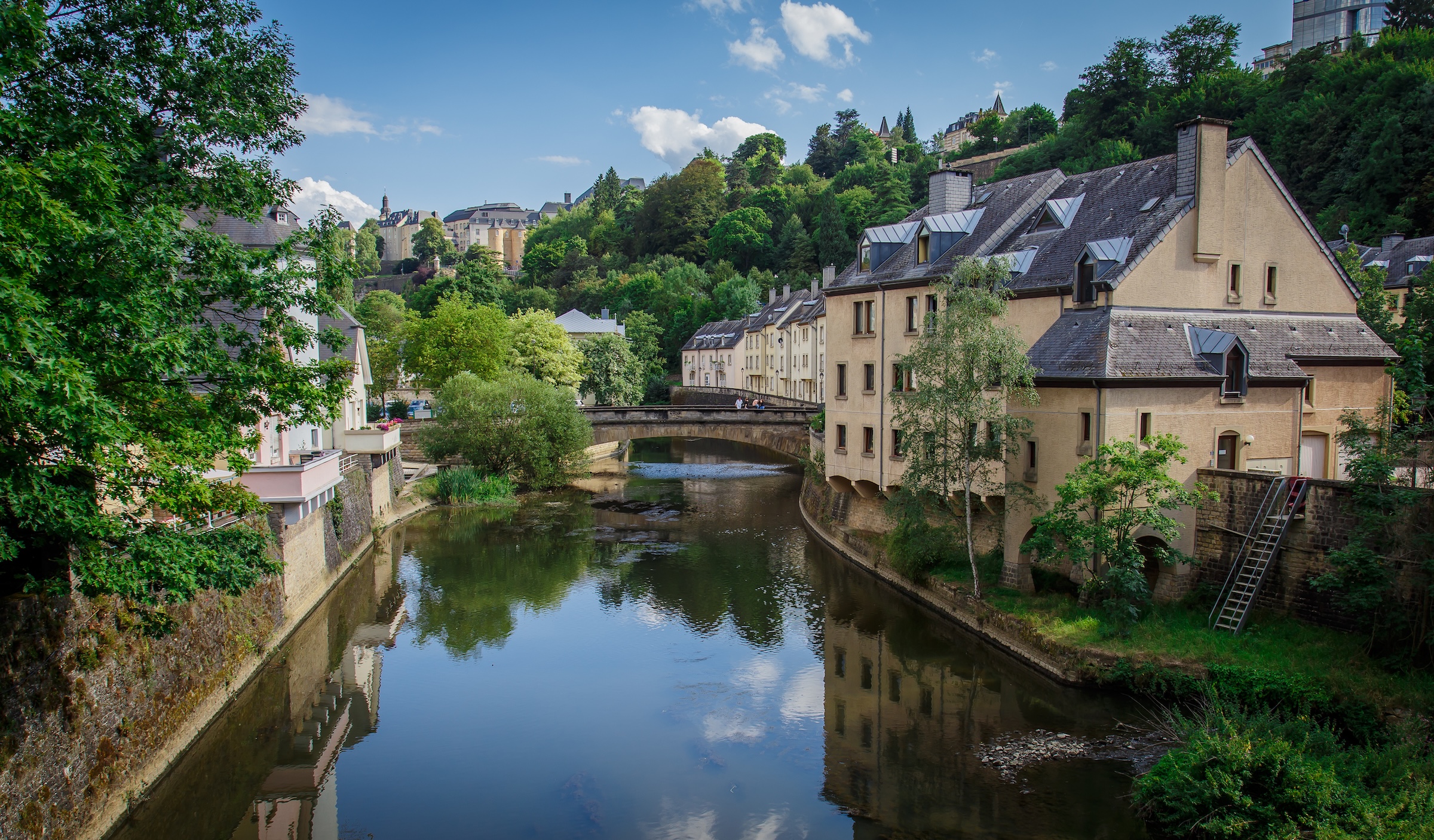
Interview
Collaborative approaches to flood and drought risk management in Luxembourg
In our interview with Marc Hans from Luxembourg’s Water Agency we discuss how collaborative efforts, both local and international, are essential for managing flood and drought risks.
Welcome Marc, thank you for your time. Could you tell the readers a bit about yourself and the role of Administration de la gestion de l'eau?
Sure! A bit about myself – I grew up in Luxembourg and studied chemistry in Aachen, Germany. After my Phd, I entered the specialty chemicals industry, joining BYK-Chemie, which is part of the ALTANA consortium. During the eight years with BYK-Chemie, I had the opportunity to hold various global positions in the area of R&D and product group management. Eventually, I met my wife, who is from Luxembourg, and that brought me back home.
After some intermediate steps I joined the Administration de la gestion de l'eau (Luxembourgish water agency) in summer 2023. In general, the role of the water agency is to ensure sustainable and integrated water protection and management on a national level. Awareness-raising activities and information of the population are very important part of our work when it comes to collaborative approaches to flood risk management. In fact, we can only achieve the best possible flood protection if everyone works together. From state authorities, over local municipalities to individuals, everyone has a role to play in implementing protective measures.

Marc Hans
Director, Luxembourgish water agency
Marc Hans is the Director of the Luxembourgish water agency Administration de la gestion de l'eau (AGE). He first joined AGE in 2023, previously serving as the Deputy Director. With a PhD in macromolecular chemistry from RTWH Aachen University. he has an extensive background in the specialty chemicals industry. He spent 8 years at BYK-Chemie, a worldwide leader in the production of additives for paints, coatings, plastics, and more. He had several career steps – working in the lab, managing product groups, and even oversaw some departments globally, including labs in Japan and Germany. Following his work abroad, he returned to Luxembourg and joined the Environment Administration (AEV) in 2021.
How do you engage with local communities, stakeholders, and research institutes in Luxembourg in your flood and drought risk management?
A crucial point regarding stakeholder engagement would be for example the small river basin organisations we have here. These are groups that receive government support, both financially and in terms of guidance. Their mission is to protect springs, wetlands, and other parts of small catchment areas and to contribute to the implementation of measures contained in our river basin management plans. These organisations raise awareness and inform the public about water protection and measures that need to be implemented, such as natural river restorations. The latter also play an important role for flood protection.
On the scientific side, we collaborate with universities and research and technology organisations (RTOs) in Luxembourg. Through a convention with the Ministry, we run several research projects. For example, one project focuses on flood prediction in small catchment areas, which is often very difficult. Another project looks at low-flow events and droughts, like the one we had in 2022. These projects provide critical insights from past events, allowing us to refine our strategies and improve future preparedness.
Aenean sagittis at tortor eget aenean aliquet adipiscing at. Sit convallis tincidunt varius pellentesque vel urna. Aliquam eget bibendum condimentum arcu egestas eget. Tellus imperdiet sit gravida eget. Odio posuere porta sagittis tor.

Marc Hans
Director, Luxembourgish water agency
Luxembourg is bordered by Belgium, France, and Germany, with rivers enter and exit its borders. How does this transboundary context impact water management strategies in Luxembourg?
The transboundary context is indeed both challenging and interesting. Water does not stop at borders, which makes cooperation across countries essential. At the European level, the framework for this cooperation is largely set by the European directives, which guide how countries work together.
For instance, we develop our river management plans for Luxembourg, but these plans are aligned with the broader framework established by the European Water Framework Directive. This directive sets the foundation for river basin commissions, which are international groups coordinating the management of cross boundary river basins. One example is the Rhine River Basin, which spans several countries, including Luxembourg, France, Germany, the Netherlands, and Belgium, among others. These countries come together within structured groups to address various topics related to water management.
These commissions have expert groups dedicated to key areas harmonising cross-border alarm systems, standardising data, and developing shared modelling tools. This common approach to modelling helps improve flood predictions and overall water management across these shared river basins.
Additionally, at the European level, there are programs that foster local, cross-national projects. For example, Luxembourg participates in the Interreg FlashFloodBreaker project that aims to enhance resilience against extreme flash flood events in North-West Europe. These kinds of projects are crucial for strengthening the cooperation and resilience of water management strategies across the Benelux and neighbouring countries.

We notice that weather conditions are becoming increasingly unpredictable and extreme, with longer droughts in recent years and a very wet 2024. How is the Administration de la gestion de l'eau preparing for these difficult circumstances?
This trend of extreme and unpredictable weather is not entirely new; we have been observing it over the past 10 to 20 years. In fact, it is already accounted for in the various plans we have in place. For example, our management plans, in the context of the Water Framework Directive, address a range of climate-related challenges. These plans are updated every six years to address emerging issues, such as the growing frequency of extreme weather events like flash floods and heavy rainfall.
In response to these changes, we have been focusing on specific measures. These maps identify areas at risk during heavy rain events, even in locations without rivers or surface water. This tool helps us anticipate potential flood risks and allows local communities to take preventive measures when building or reconstructing in vulnerable areas. While it is not yet legally required to consider these maps during construction, we’re actively promoting their use to raise awareness and enhance preparedness.
Additionally, we have plans in place like the drinking water strategy, which also considers the potential impacts of extreme droughts. We evaluate whether we have enough reservoirs and backup systems to address water scarcity during these periods. We are also working on a climate adaptation strategy, which includes various water-related measures. However, one area that requires more attention is the management of low water levels during droughts.
Overall, significant progress has already been made, but the focus now is on ensuring the effective implementation of these strategies. As we revise our plans and strategies, we are incorporating climate change and its impacts, which will shape our future actions in addressing these challenges.
When you consider the management of extreme floods and droughts in transboundary river basins, we made an inventory on the Benelux Water Day 2023, about knowledge questions the Luxembourgian government has on this subject. Are there pressing new questions/topics you may add to our knowledge agenda?
Well, there has not been a pressing new issue that has emerged. The ideas presented in the inventory are valuable, and after reviewing the list, I believe addressing the points already outlined will set us on the right path. We are already moving in the right direction.
One of these extreme weather conditions was, of course, the July 2021 flood, which had dramatic consequences also in Luxembourg. In your opinion, what value could the JCAR ATRACE program add in preparing for such extreme conditions in the Benelux and its neighbours?
The value of the JCAR ATRACE program, I believe, lies in bringing together experts and organising specialised workshops or platforms to exchange best practices. Such workshops or exchange platforms would allow countries to share their experiences and learn from each other on how to address these challenges. Facilitating this kind of knowledge exchange could be beneficial. While there is already considerable collaboration within specific river basins, additional value could be gained by learning from extreme events like the 2021 flood.
Next article